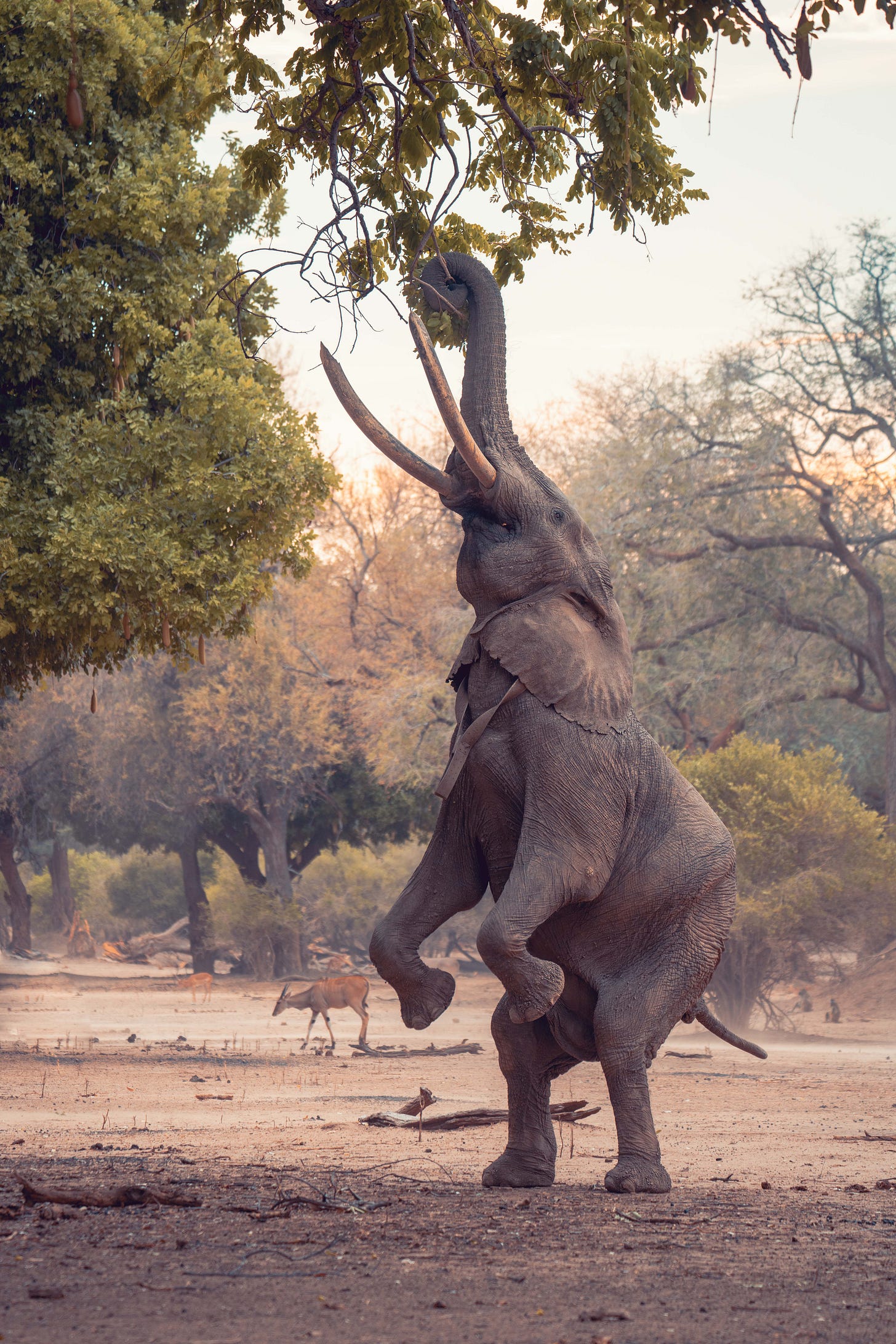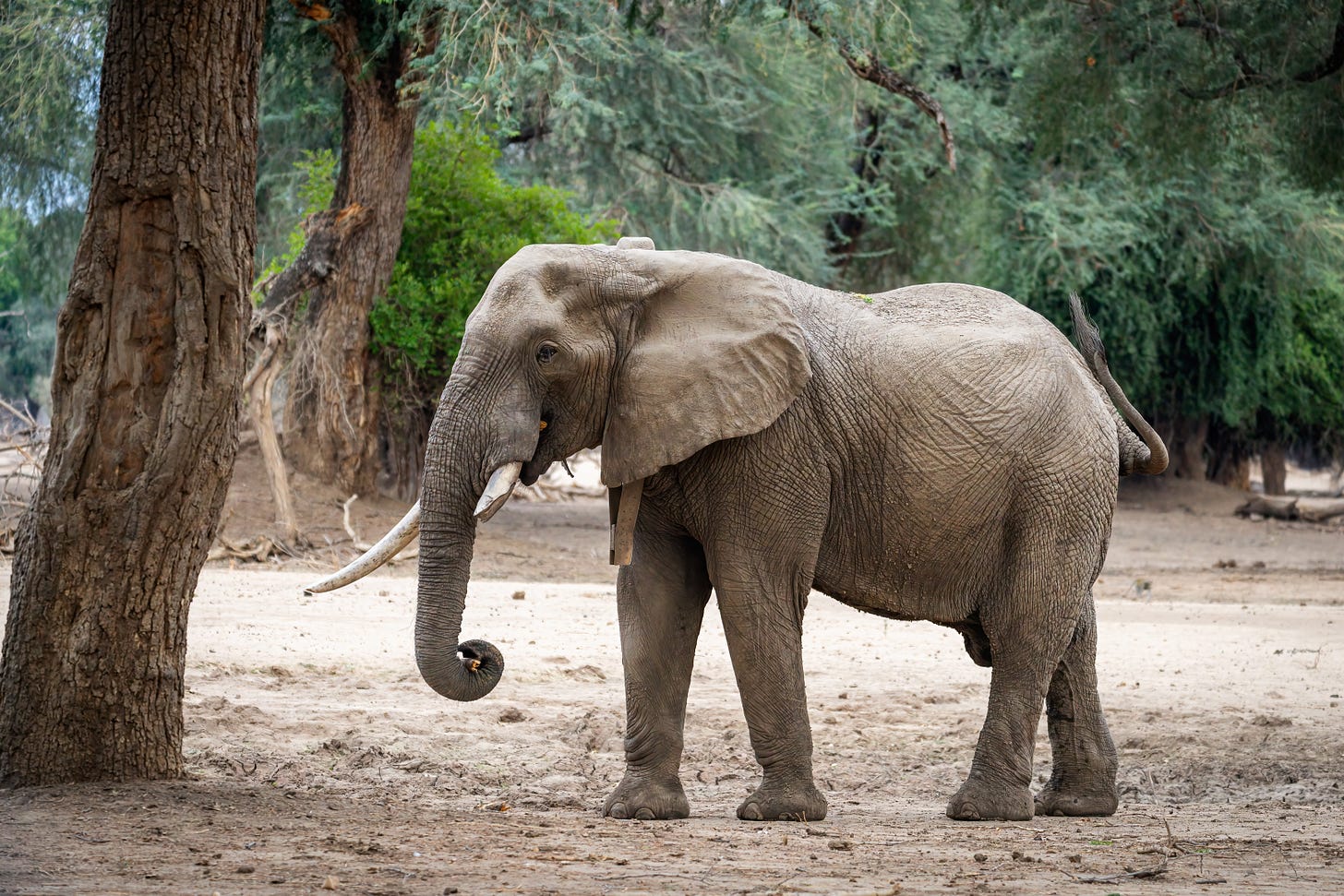In the Field in the African Bush 🐘
A few practical wildlife photography tips for your next adventure into the wild bushes of Africa. And a peek to my gear on the field.
Being in the field is the best part of wildlife photography. This is the part I cherish the most. And I think this is the case with most wildlife photographers. The other parts of bringing all your photos to the hard drives, organizing them in Lightroom, and the time-consuming editing are parts I don’t enjoy so much. Mainly because it’s just sitting in front of a computer. And I’m an outdoor person at heart. ;)
Nowadays, I mostly try to minimize the time I spend editing, as I would rather take the photo than “make the photo.” There are exceptions, of course, but then the objective of the photo is something other than trying to be a natural representation of the scene.
Being in the African bush with all its distinctive sounds around you is one of the best things I know in life: the snorting of the hippos, grunting of the lions, laughing of the hyenas, and rumblings of the elephants.
Amidst all this, if you don’t hone your hearing and concentration toward some particular thing, preferably one thing at a time, the cacophony coming to your senses will drive you nuts. Believe me – it will!
Don’t try to be all over the place; instead, be in one place. Be present with all your senses in one place.
I’ve enjoyed spending the last five-plus years in Southern and Eastern Africa, photographing in iconic National Parks and many unknown but wonderful places.
Sometimes, it’s overwhelming for the senses, but on these occasions, I try to narrow my focus to a single goal at a time. Some days, I try to focus on elephants and on others, on big cats. Of course, on a safari, it always depends on what you can find in the bush, but letting your attention escape to too broad subjects is not an advantage.
If you get a feeling that “you don’t know what to photograph,” it’s time to put the camera down and just look at your surroundings for a while and absorb what you actually see. Then, your frame(s) will come to you naturally.

What Equipment Do I have in the Field in Africa?
This core set is my trusted companion at the moment:
Sony A7RV
Sony FE 100-400mm f/4.5-5.6 GM OSS
Sony FE 24-105mm f/4 G OSS
Samyang AF 24mm f/1.8 FE (primarily for astrophotography; Milky Way and the stars)
It’s said that you should acquire the best equipment you can afford, and these are my choices within my budget. I’ve had this combination for a few years and am extremely happy about it!
But don’t fall into the trap that having the most expensive gear on the market would make you a better photographer – it won’t. Only relentlessly practising the skill will.
Many will also argue that you would need more focal reach than “just” 400mm for wildlife, but based on my half-decade of experience around Africa, I can say that you don’t necessarily need more than 400 mm. However, more than 400mm will be handy for photographing birds, if that is your preference.
Sometimes, though, I use my full-frame Sony body's APS-C crop mode to reach the equivalent focal length of 600mm. A high-megapixel body like the Sony A7RV (61 mpx) allows me to do that without issues, as the crop mode still gives me an ample 26 mpx—6240×4160 pixels.

Patience is the Key in the Field
I spend most of my time observing the surroundings when I’m out “in the bush” in Africa. Having a keen eye and knowledge about the bush and the behavior of wild animals will help a lot when you’re searching for animals. Then, you will know what to look for.
The subtle movement of the branches far from the road can give away the elephants hiding behind the bushes.
You wouldn’t think a 7-tonne animal could hide anywhere, but they can be only 10-20 meters away from you, and you don’t have a clue if you don’t pay attention!
The picture above of the standing elephant, Boswell, from Mana Pools National Park in Zimbabwe, was one of the shots I had wanted to get for a long time. I was in Mana Pools at the end of October 2023, and didn’t get to see him. When I was again at Mana Pools in early November 2024, I had a mission – to find Boswell and get this iconic photo of him. It took quite some time driving around the park before I found him.
But when I did, I was ecstatic! The wait was not over, though. He had many other elephants in his company, and we spent almost three hours (!) waiting patiently with the herd before he decided to show off these fantastic standing skills!
But all the trouble was more than worth it! It was amazing to experience this remarkable elephant’s presence and personality. He was a true character. And to my fortune, I found him again on the next day! 😄
Mana Pools is also one of the few National Parks in Southern Africa, where you can get out of your car and be on foot (and use your common sense, of course!). I took this picture of Boswell while on foot, though I was near my vehicle.
As I usually drive by myself with my Defender in National Parks, I’ve gotten used to finding animals on my own. It’s never very easy, but it's super rewarding! It’s a very different experience to go on a guided safari and just sit in the car while the guide does the work and finds you the animals. But sometimes that is fun, too.
Somehow, I just tend to enjoy the bush more when I drive by myself.
However, don’t have too high expectations while you’re out in the wild; this will probably lead to unnecessary disappointment (like I experienced in October 2023). Instead, please take it as it comes and see what nature offers you!
Every day is different and a surprise. But I can assure you, there is rarely a dull day in the African bush! Expect the unexpected and keep a keen eye. You will be rewarded.
Stay Wild & go out there with your camera – every day, if possible! 😊
PS. Lastly, but not least, I’d like to ask you what kind of content you’d mostly like to read here? I’d appreciate it if you’d take a minute to reply. And if you choose the last option, “Something other", please leave a comment on this post and tell me what it will be. Thank you so much! 🙏





